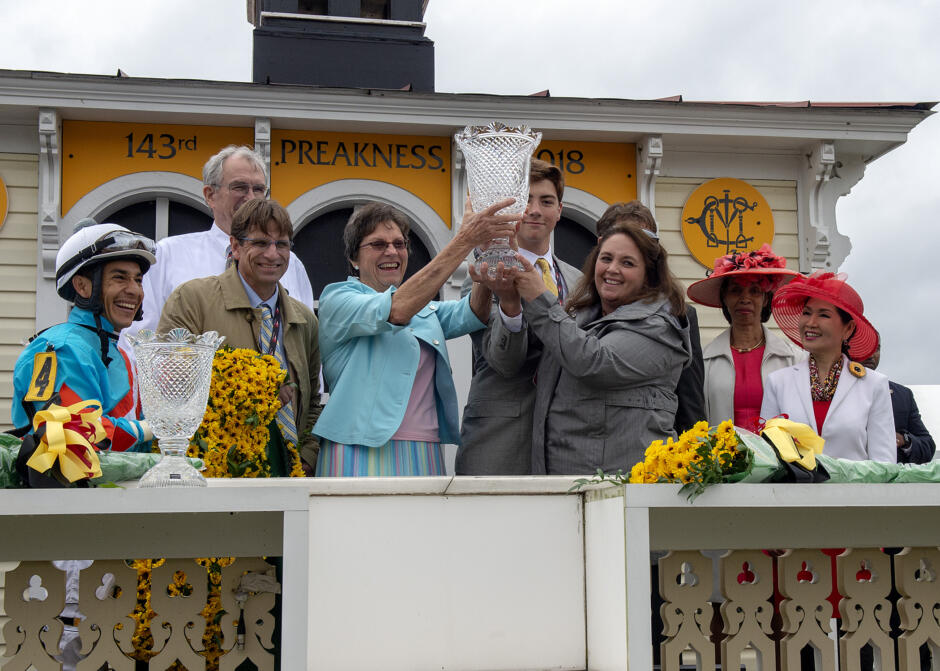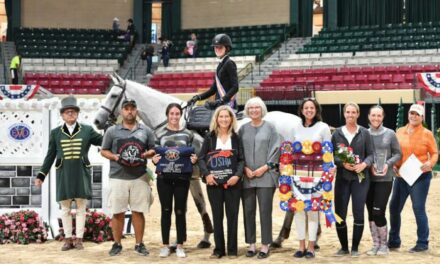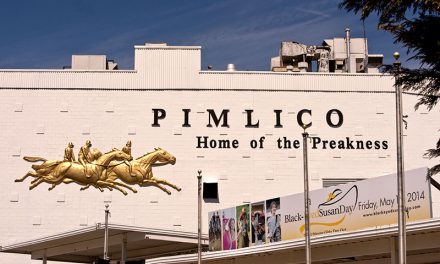How to Own a Race Horse Without Breaking the Bank (first published in the May 2021 Equiery)
Have you ever watched a horse race and been caught up in the excitement of the finish? Have you ever found yourself cheering with abandon and high emotion for a horse you had never heard of not even three minutes earlier? Have you ever wondered about those people in the stands who are jumping up and down, hugging, and tossing around bottles of champagne and cigars?
Ever watch the bevy of owners, trainers, jockeys, grooms, and groupies press into the winner’s circle, lay a hand on the noble steed, and smile for the camera? Ever watch the Maryland Jockey Club present the Woodlawn Vase to the Preakness Stakes winner? And watched them drape the the blanket of Black-Eyed Susans over the winning horse? No matter how you look at it, it’s magical. And if you have done any of these things, then you are a bona fide racing fan.
But how do you go from being a fan to an owner without breaking the bank? We consulted a team of experts for answers to common questions about affordable ownership.
Peter R. Bradley III is one of the top bloodstock agents in America. He grew up on a cattle ranch in Northern California and attended the University of California at Davis. His passion for racing led him to Hollywood Park where he got his start in the industry as a hot walker. He moved up the ranks of the Southern California circuit and became assistant to trainer Gene Cleveland. Later, Bradley was the farm manager at Brookdale Farm in Kentucky and worked with Cromwell Bloodstock Agency in charge of private sales. His final stop before setting up his own business, Bradley Thoroughbreds, was as the head of Lane’s End’s Bloodstock Division.
Gary Falter grew up in Ohio and joined The Jockey Club Information Systems, Inc. in 2000. He was the Vice President of Development and Operations, responsible for the Equineline Portfolio service, the Horse Farm Health-book software for tablets, and the iPad Sale Catalog App. Since 2012, Falter has been leading the Jockey Club’s Thoroughbred OwnerView, a nationwide initiative to bring a more diverse demographic into the world of race horse ownership. He previously served on the board of the Ohio Thoroughbred Breeders and Owners association. Falter has also owned and bred Thoroughbreds for 32 years and maintains a small breeding operation at his Red Fox Farm in Kentucky.
Q. What is the difference between syndicates versus co-ownership versus sole ownership?
A. Sole ownership is the most autonomous but also most expensive way to own Thoroughbred racehorses. As a sole owner, you are 100% responsible for all expenses related to the horse. You also get to make all decisions regarding your horse, hiring an agent to purchase, hiring a trainer, etc.
A syndicate can be a very cost effective way to own a race horse. In a syndicate, the bloodstock agent purchases a horse and then syndicates it into a set number of shares for purchase. Most often, the value of the shares reflects a significant mark up from the purchase price to cover expenses, with the excess going to cover management fees, and any extra costs related to the horse. Syndicates can range from 20 owners in a horse to thousands of owners in a horse.
A co-ownership or partnership, on the other hand, is usually a smaller group of owners that are collectively responsible for their pro-rata stake in the horse. Typically, buying into a co-ownership is the cost of the horse plus 5% to the agent who purchased the horse. Bradley Thoroughbreds focuses on this type of investment. We focus on slightly larger investments, but it guarantees our co-ownership groups stay small enough so that we cater to all our owners.”
– Pete Bradley, Bradley Thoroughbreds
Q. What is pinhooking?
A. The term “pinhooking” is an old Kentucky tobacco term used when a speculator bought a farmer’s young plants and later identify them with a pinned note at market. Buying the plants low and selling high would return substantial profit for the speculators. In terms of Thoroughbred auctions, pinhooking yearlings describes the practice of buying yearling horses, at auction or privately, overseeing their breaking and training, and eventually re-selling them as race-ready two-year-olds in training. The practice can be done with weanlings to resell as yearlings.
– Pete Bradley, Bradley Thoroughbreds
Q. How can I learn more about potential ownership?
A. There is a website that was developed specifically to encourage and support Thoroughbred Owners (OwnerView.com). On OwnerView (which is a free site that anyone can access), you will find information about a wide-variety of ownership topics including trainer stats and profiles, racing syndicate stats and profiles, racetracks, licensing, state incentive programs, Thoroughbred auctions, aftercare and several more content rich topics.
One area that many newcomers research is the “Ownership” menu option. In this section you will learn many “Ownership 101” considerations including estimated training costs, developing a business plan, purchase options and selecting your advisors.
OwnerView also manages an annual Thoroughbred Owner Conference that for the past several years, has been hosted during Breeders’ Cup week and typically lasts 2-3 days. Due to the COVID pandemic, the conference is scheduled to be held this year as a series of virtual panels starting in March and running through December. All panels take place on the first Tuesday of the month at 2pm EST. Pre-registration is required and is free.
– Gary Falter, The Jockey Club
The most important thing is to do your research. Email or call different syndicates, co-ownership groups, or agents, then find your financial comfort level, and understand the risk of purchasing Thoroughbred racehorses. A co-ownership or a syndicate is the best way in my opinion to dip your toe into the water without taking on too much financial responsibility. These type of ownership groups allow you to spread your investment over more horses and increases the opportunity for success.
– Peter Bradley, Bradley Thoroughbreds
Q. Does anyone in the racing industry focus just on owners, as opposed to trainers and breeders and bloodstock agents?
A. Yes, as mentioned above, OwnerView is dedicated to Thoroughbred owners. Also the Thoroughbred Owners and Breeders Association is a trade organization that represents Thoroughbred owners and breeders. Additionally, most racing states have an owner and breeder organization that represents owners in their respective states. For example, in Maryland there’s the Maryland Thoroughbred Horsemen’s Association.
– Gary Falter, The Jockey Club
Most of the top-level agents, syndicates, and trainers should have a designated person to communicate with co-owners. At Bradley Thoroughbreds, we send weekly updates to our owners regarding their horses’ progress. We work to get co-owners on the backside to see their horses train in the morning and set up seating for races in the afternoon. It’s a concierge service, and we try to make sure our owners have a wonderful time win, lose, or draw.
– Peter Bradley, Bradley Thoroughbreds















